(back to home)
Gabrielle Goh
/NM3205
(february)
2 february, 2018
#4
//Exhibition Radio Malaya - Constructive Critique
Art piece: "Let's Chat", Amanda Heng (1996)
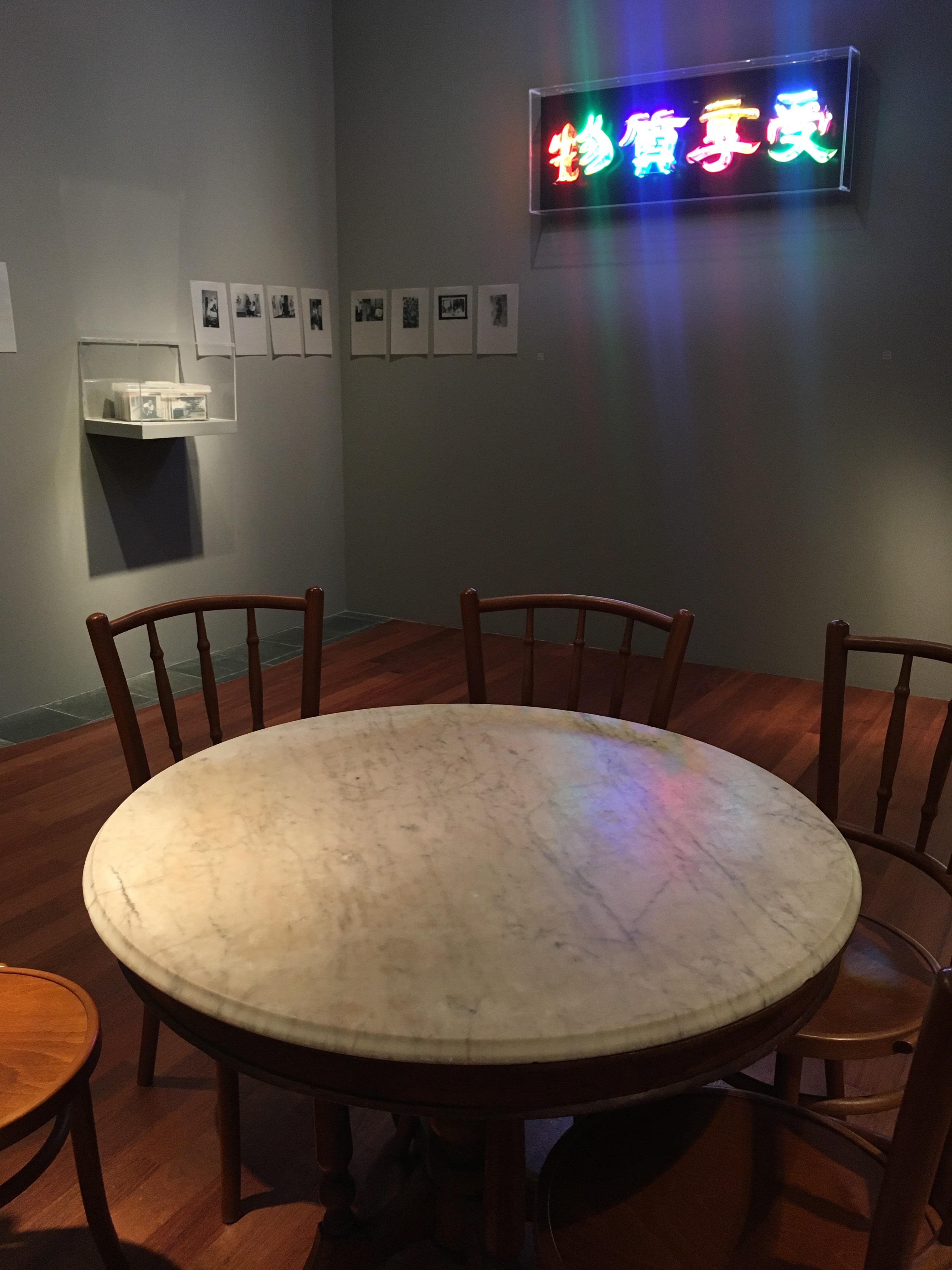
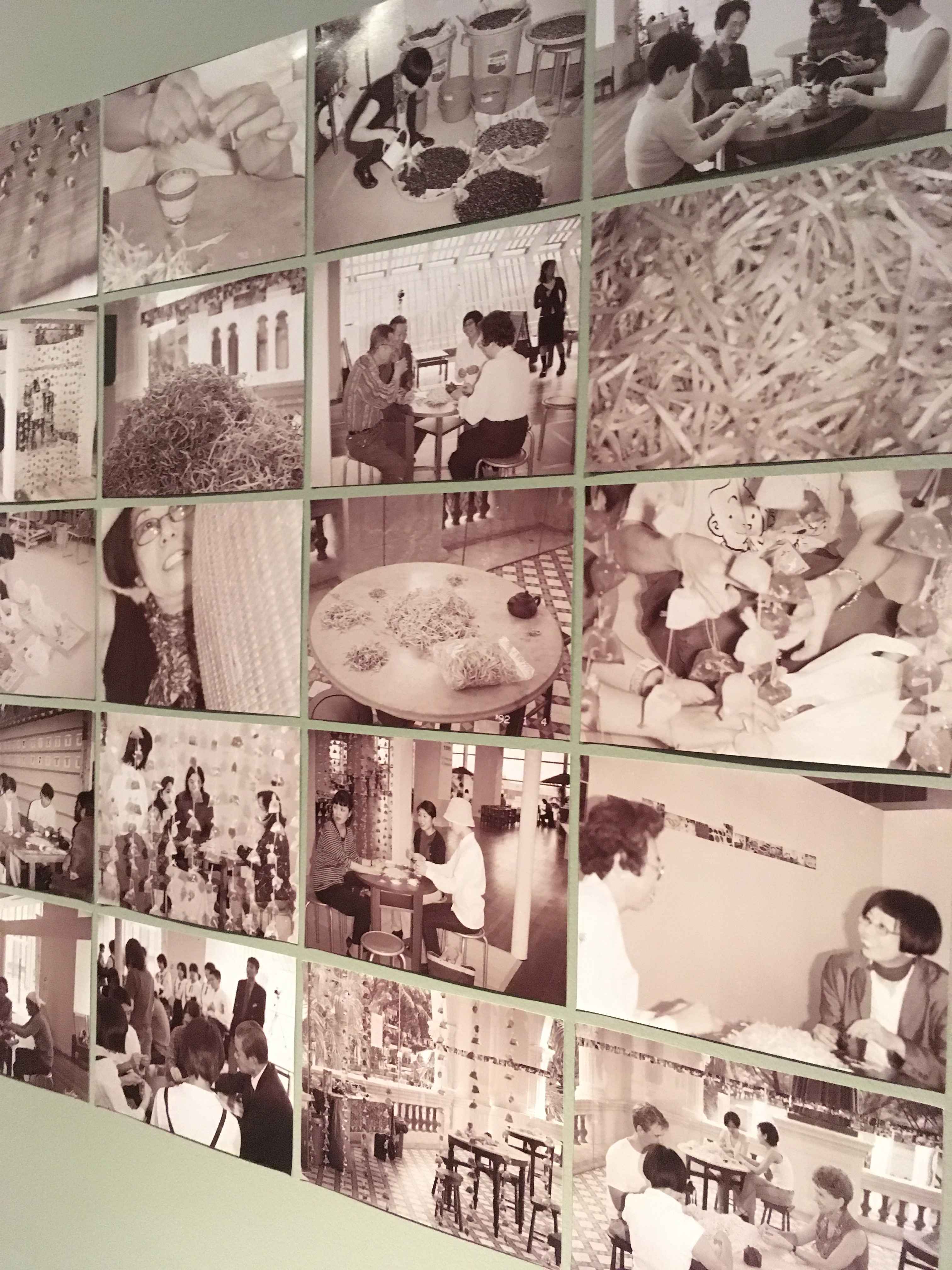
Response:
What drew me to this piece was the seemingly ordinary nature of the art work. Given how it looked, to me, like an ordinary set of furniture, I was curious to see what made such ordinary looking pieces of furniture.
After the brief given by the museum guide, I realized that these pieces of furniture were important as they were symbolic of a particular period of time in Singapore's history. This performance piece saw Heng interacting with the audience over some tea and cleaning beansprouts. What I had found particularly interesting that one of the problems Heng encountered whilst preparing for her performance piece was looking for suppliers of "uncleaned beansprouts". It made me realize how we live in a society that is so developed and "pampered", so much so that even "cleaned" beansprouts sold were readily available.
Description:
"Let's Chat", Amanda Heng (1996).
A performance piece which encouraged the audience to sit down and, as the name suggests, have a chat with Heng herself.
The piece included a round table and some chairs, reminiscent of those commonly found in the '80s. The audience interacted with Heng over cleaning beansprout ends and drinking tea - this was to mimic the simple ways of kampong ("village" in Malay) life. A myriad of topics were discussed, however, examining the costs of material progress was the main focus
Analysis and interpretation:
Initially, I had seen this piece as a platform and an avenue for individuals to air their opinions and views. However, after looking at the photos that accompanied this piece, it made me realize how this "Let's Chat" was more than just an ordinary piece of art work - it was a piece that gave each individual a unique experience. No two conversations shared would have the exact same meaning, every experience was personal.
To me, I feel that Heng had successfully managed to recreate the feelings of "closeness" felt in a tight knit community, reminiscent of the past. In this day and age, where things are in a constant state of motion, little time is left for us to sit down and think and truly reflect.
Evaluation and judgement:
I feel like Heng's piece truly raised the awareness of material progress made in Singapore. Often times, we take many of the simple luxuries that we have for granted - running water at the turn of a tap, light at the flick of a switch, food readily available for purchase at nearly every corner of the street.
I am curious to know what Heng's thought process was and how she even came to conceptualize such an idea. Why did she decide to choose such a medium? Why the act of cleaning bean sprouts over tea instead of other acts just as idyllic, labourious and symbolic like the making of chinese love letters? I am also interested in knowing what some of the interesting findings she has gathered from her sessions are. To me, it is important to be aware of the different perspectives that exist so that individuals can come to a point of understanding rather than jump to conclusions.
6th February, 2018
#5
#6
group mapping process
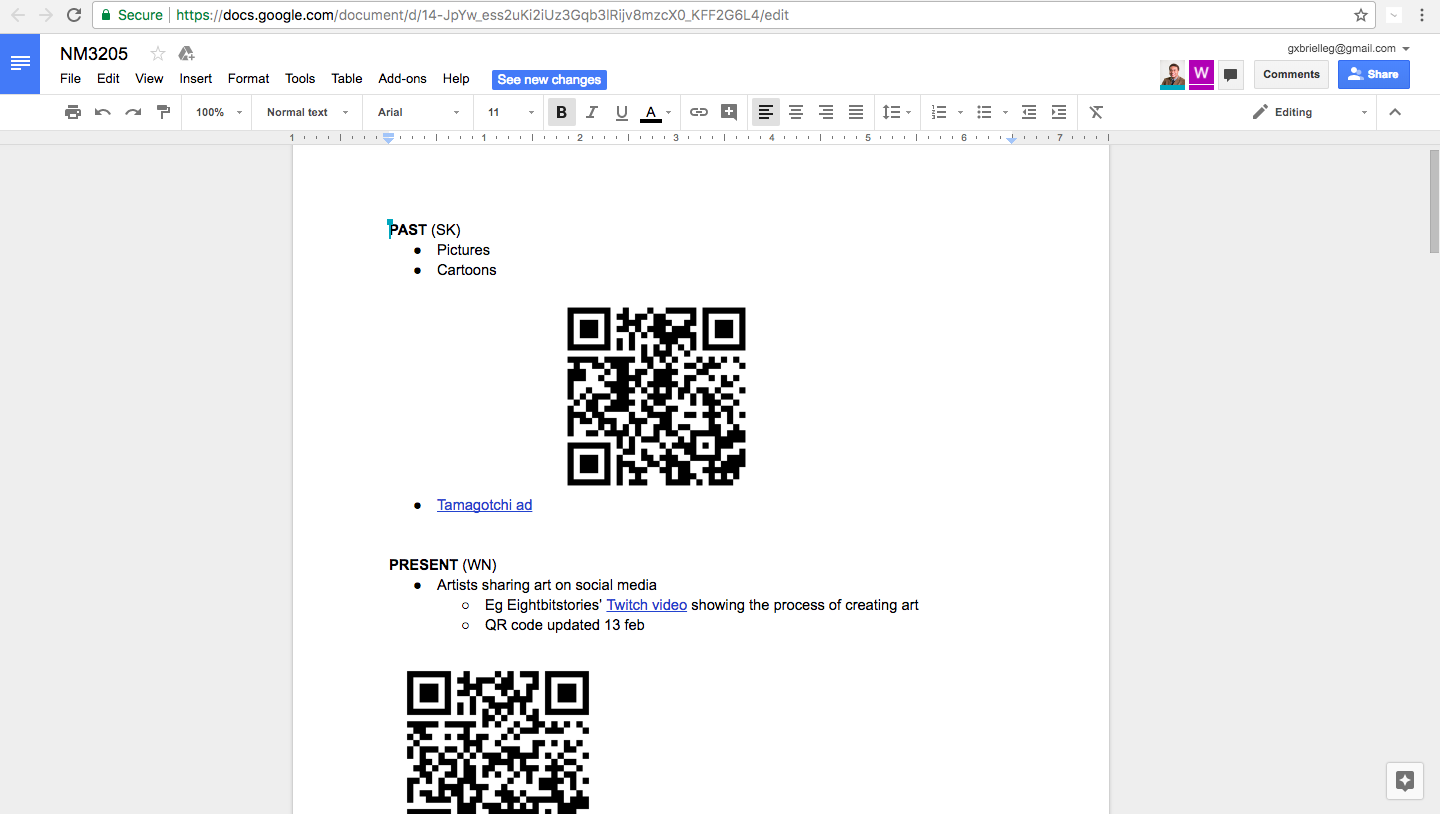
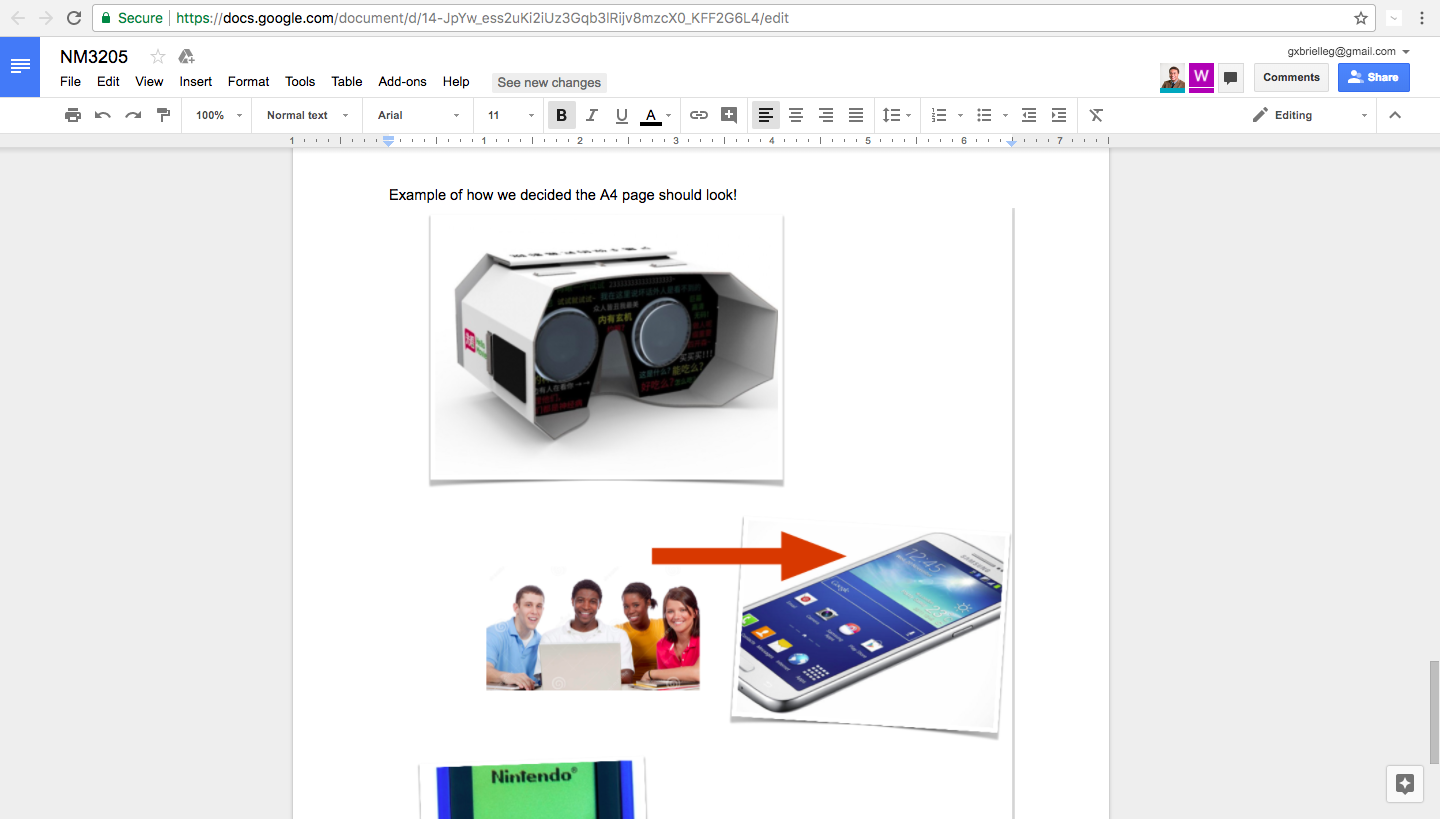
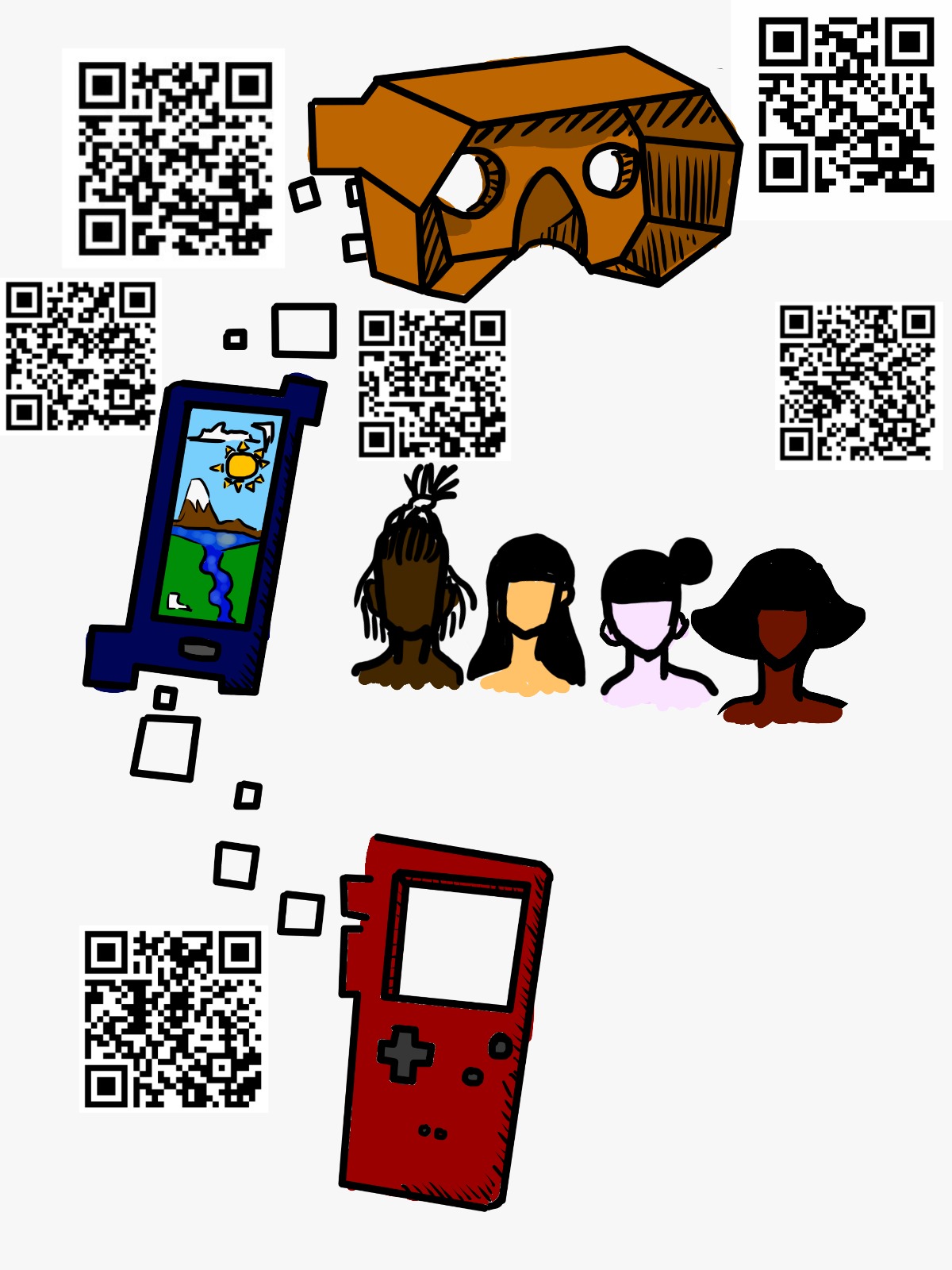
//Our group (Group E for Excellent!!!) met once in January to discuss the direction we planned on taking with our group map. We decided that our map wouldn't segment itself distinctly into "past", "present" and "future" sections. Rather, the map would be a continuum, with tiny pixels connecting these segments - given how many of the technologies of the past form the basis for many of the current/ future technological innovations.
Given how many of us have busy schedules, we decided to take our discussion online using platforms such as Whatsapp and Google Drive to facilitate this process. By using such platforms, it allowed each of us to contribute any new insights or ideas that we had as and when we wished. One of the reasons why we chose to use Google Drive to facilitate our discussion was because of the presence of the "revision history" feature. This feature allowed us to view our digital footprint - even though we might have deleted various discussion opinions and ideas off our google docs superficially, we still had access to such opinions should the occasion arise for us to track back.
We decided to include QR codes into our design to encourage audience engagement. Some of these QR codes were links to articles and videos, which stimulated both the senses of sight and sound.
12th February, 2018
finalized group map
initial rough sketch of our group map
Using digital platforms to communicate art
“kult curates experiences”
- Content creating for clients
- Working with artists
Gallery: platform for kult to showcase and build the network of the artists; driven by the need to put out content that is immersive
- Need for content made to be accessible
Food was the basis for one of their exhibitions – relatable to all age groups
Content generated is done with the purpose of getting some sort of emotional response; at the same time, there needs to be a balance; managing the integrity of the artist when you convert their artwork onto digital platforms
- House animations in arcade machines; how do you take the work that you create into the lives of people? Though people might use social media, they might not necessarily go to it – need to bring the work to people
- Touch screen animations that reacted to the way that people interacted with it; different way to display fortune
- Installation that reacted to sound
- Using AR
- How do you make art more accessible? How to you make it more relatable to all age groups
Learnings
1. There needs to be a story
2. The need for insight and for the stories to resonate – press a “hot button”; thereby creating sth immersive as people want to feel involved
3. There is a need to find a balance – it doesn’t need to all be digital, a balance between digital content and the arts
“Lacoste in motion” project
promote the “L1212”
- creation of animation
- used the location of an old garment factory
- exhibition engagement entertainment
- artists interpreted the history of lacoste in their own way
VR concept of Frank Herbert’s “Dune”
- book made into VR
- turned this into a real life exhibition as well
- experience the world of spice through taste, sound, touch
games and politics exhibition; getting the message through different mediums
- game engine modifications, new games designed using existing technologies
- surveillance states; getting this idea across through the presence of games
the way in which they measure the responses they illicit are through feedback they gather and the buzz generated through their observations on social media, etc.
certain specific digital media have their own restrictions and limitations
- some are unable to grasp the concept of what is to be considered a “conventional norm”

//GUEST SPEAKER:
THIS IS A LINK!!!
CLICK HERE!!!!
for more about "Dune"
Smells of Dune,
by Oo La Lab
#7
14th February, 2018
://observations on space (week 6)
squeak squeak squeak. This porch swing needs some oiling. I am on a rooftop sitting on a porch swing. A place i turn to when I need some peace and quiet - living on campus and staying amongst 500 other residents doesn’t give you much room for that. Serenity.
The clouds are cotton candy and the sun, a ball of fire, setting the sky ablaze with shades of pink, red and orange. The golden hour. Being up here gives me a sense of empowerment, I can see everything on the ground beneath me. For the most part of the evening, it is quiet, save for the occasional muted hum of cars driving by.
I glance at my phone, it’s 7:12PM, February 14th 2018. Valentine’s Day. I switch on my wifi to see if there are any open networks I can connect to - some of these networks have funny names; “hohohaha”, “potatofarm” “NOWIFI”. They’re all password protected. I try connecting to my own wifi network, but the signal is too weak. I concede defeat. No Instagram story of the skyline this evening, I suppose.
I hear chatter and laughter - groups of students walk towards the bus stop with their laptops hugged tightly against their chest. Precious cargo. The end of a school day.
“Bye! See you guys tomorrow!” One student parts from the group and stands by the side of the road. She takes out her iPod, plugs her headphones in and puts them on. Her head bops to what i imagine to be the beat of the music. She whips out her phone and begins typing furiously on her screen. A look of anxiousness is written all over her face.
An elderly couple stands beside a row of orange and yellow bicycles. The elderly lady frantically hovers her phone around, perhaps hoping to activate just one of the many bikes. should i go down to help them? Her face lights up as she gets onto the bike, it seems she has figured it out. She then hands her phone over to the elderly man beside her - who, I assume to be her husband - and instructs him on how to activate a bike. He follows suit and they ride off into the sunset side by side.
A flurry of chirps ripple through the sky. I look up to see a flock of birds flying and swooping together in an ever-changing pattern. how do they do this? It looks as though they were performing a beautifully choreographed dance just for me.
Amethyst now emblazons the vast sky. The girl with the headphones has moved to sitting on the pavement, with her arms folded across her chest. She takes a peek at her phone. Her feet tap furiously on the tessellated tiled pavement. The look of anxiety she once had on her face has now turned into one of exasperation. She peeks at her phone again. ding! Her phone chimes. In an instant, she looks up and not a single trace of worry or discontent is left on her face; relief, which slowly turns to joy, then glee. A car pulls over and a man walks out with balloons. They embrace. A Valentine’s date? They get into the car and they disappear into what is now the stygian dark of night.
I look around me - was I the only one who saw all of this?
squeak squeak squeak. This porch swing needs some oiling.
"hohohaha", "potatofarm", "NOWIFI".
Should I go down to help them?
ding!
How
do they do this?
To live in the moment or to capture such moments so that they can be relived whenever I feel like it?
some screen shots of our collaboration using google docs
serenity.
#8
21st February, 2018
GUEST SPEAKER: LIMCHARLOTTE
CYBERFEMINISM AND THE INTERSECTIONS OF DIGITAL MODERNISATION AND ART
THIS IS A LINK!! click here to access her website and view her work
Some of her old work’s: “Daddy’s Girl”
The sexualization of parental figures; why is the word “Daddy” associated with sex? Why is it something that is almost attractive? Comes back to the subordination of women and the idea of authority figures having that power over women.
Language wise, tone wise they are imperatives.
Louboutin yoga
Symbolically an oxymoron – form a discussion of how we amalgamate such symbols and different character tropes.
- What does it mean to do yoga, to exercise and to meditate?
- What does it mean to wear luxury brands at the same time?
- It is a depiction of a frantic mind and to be in control of yourself while at the same time subscribing to high end consumerism
Her art raises questions like – what does it mean to be naked? What does it mean to be heeled? What is the history of heels? What does it mean that she has body hair? What does it mean for her to be doing Yoga whilst wearing Louboutins?
The character talks about a fractured identity – someone who’s at war with their own politics and also moving on to the idea of how do we value ourselves?
Beauty Standards
Feminist philosopher (Simone de Beauvoir)
“it is not women's inferiority that has determined their historical insignificance: it is their historical insignificance that has doomed them to inferiority.”
- When thinking about beauty standards, we have to think about how institutional, commercial and social norms and models inform the implications of terms like beauty.
- Is the word “beauty” gendered? When hearing the term “beauty” we tend to think of the “longer aesthetics”; the outfits that you wear, the looks more associated with femininity which is evident in the way that more feminine products are sold over those associated with masculinity.
- Postures women as “the other” and men as “the default” and how women act and present themselves relative to “him” – provides us an understanding of the historical suffrage of women, that is why we have to go through certain compensations right now.
Post feminism – this lifestyle of fitness regimes.
- Ignoring the larger politics which was a large part of feminism in the 60s and 70s, now more focus is placed on “self-maintenance” (through exercise)
Self-defining affirmation through sex – reappropriating things to regain power (e.g. ethnic slurs?)
John Berger “Ways of Seeing” – talks about how we view things and what informs that
The surveyor of women in herself is ultimately male, and the surveyed is female – so she turns herself into an object in the vision
Premise is the traditional hierarchy and the subordination of women to be viewed as an “object” - “the male gaze”
Evaluation of the images: the images are all in black and white, except for three things that are colored – her shoes, underarm hair and pubic hair. These things have strong meanings attached to them, based on what society has associated them with. For instance, how acceptable are, say, her shoes? They are ordinary high heeled shoes but the presence of the red soles indicates the monetary value of them – they’re expensive and not everyone can afford them. Moving on, looking at her body hair, they’re natural, but society has made us think that hair like that is “gross” and needs to be gotten rid of. The images are a representation of the conflict of the war inside of her mind.
Is identity internally coherent through time or is it based on your social and cultural context and also the time that you are in?
This character is a metaphor for how our society functions at large
An incredibly self-aware, but at the same time, equally confused generation of individuals
- Endless consumer choices amass the fact that there really is no choice for us
Art in different spaces – white cube (a typical gallery space)
How does placing her work online vs in a white cube change the value of her work? How does the framing change the value of an art piece?
Post digital art
Appropriation of art - @richardprinced
He comments on people’s work of art on Instagram so he says he’s contributed to the art piece; took screenshots of these posts and placed them in an art gallery, each piece sold for 90k
Remarketed the images in lie with traditional art representation – his comment is like a “signature”
Is the artist more important than the work?

"Daddy's Girl"
- limcharlotte (2017)
"Louboutin Yoga"
- limcharlotte (2018)
#9
26th February, 2018
// week 4, 5 and 6 forum responses
1. In your own words, how does the imagination of utopia serve a critical function, compared to rational critique of the Truth, in cultural politics?
The rational critique of Truth does not as much seek to entertain the idea of possible futures - it is more pragmatic and in the present and limited to what we know to be “real”.
In comparison, the imagination of utopia encourages us to think out of the box and allows us to consider the “what ifs” of various possibilities. It prompts us to see the potential of what we could be, as well as the current gaps standing between where we are now and what we could be. This then prods us to think about the necessary steps that we could take or innovations we could make to already existing practices so as to continually improve.
2. Briefly summarize your understanding of the role of geology in media theory.
In media theory, geology plays the role of connecting media and technology to the world around us. Geology itself “is” media - as seen from the way naturally occurring raw materials are used by humans to create technologies to facilitate communication to the masses.
3. Do you agree with Steyerl's take on the implications of spam on our political present in "Digital Debris"? Why or why not?
I agree with Steryerl’s views on spam. Spam takes on multiple forms and is highly prevalent in our everyday lives. No matter how hard we try to evade it, it still manages to affect us and our subconscious through new forms of advertising. Steryerl’s take was insightful to me, because previously, what I had defined as “spam” took on the form of chain emails or spam text messages where messages with unwanted adverts were sent. i did not consider the verbal repetition made by other users of the internet - such as companies for the purpose of advertising or politicians who push for ideas and try to garner support by publishing their views online repeatedly - as spam. I suppose, under Steyerl’s definition, I do see why this would be considered spam too.
4. What do you think are the implications that space, context, and curatorial direction can have on an artwork?
Lialina’s “an infinite seance” showed how artwork are not standalone pieces, and, depending on its environment, different meanings could be interpreted from it.
For instance, during the talk hosted by Kult Gallery, they talked about how they housed some of their artwork in arcade machines, which they placed in different environments, such as cafes and schools - doing this allowed them to take the work they created into the lives of different groups of people who would otherwise, probably not have encountered it if say it was placed in a different environment such as an exhibition hall, for example.
I suppose, to me, it is for the artist to decide who their target audience is and then decide on the relevant space to place their artwork in, given how as illustrated in the earlier example, space does play a huge role in depending who your message reaches.
Curatorial direction that an artist takes when creating their artwork depends on the space it is in. For instance, as mentioned by Lialina in “an infinite seance”, video art might take on entirely different directions depending on the space they are placed in - if placed in an exhibition space, the likelihood of the viewer watching the entire film chronologically from start to finish is improbable, thus causing many artists to create works that have abstract story lines that have no clear start or end to their story.
If anything, to me, it is a combination of all factors - the space, context and curatorial direction - that makes an artwork unique to the artist and a novel experience for the viewer. Changes made to any of these factors might affect the delivery of the message and the experience gained by the viewer.
1. After having read about the examples in "An Infinite Seance Part 2", what do you think it means for new media artworks to "satisfy that thirst for media-specific art and still fit perfectly into the current trends"?
To me, it means to produce art using different forms of technology to appeal to the ever changing desires of the audience, while simultaneously not totally neglecting the unique relationship that used to be more widespread between artists and their mediums. The examples illustrated of Sengmüller’s various installations are cases in point - he plays videos from vinyl LPs which in the past, were not designed to to store videos, he creates art pieces by getting a robot to inject paint into bubble wrap reminiscent of those produced by SSTVs. It shows how he is keen on making innovations to media specific art forms of the past, while keeping in mind not to lose touch with the beginnings of media art.
2. To what extent do you agree that the open source movement is reminiscent of a Marxist revolution, and why?
The open source movement is reminiscent of the Marxist revolution in so far as they reject intellectual property - the marxist revolution propagated against the ideas of having power concentrated in the hands of capital, likewise, open source content allows content to move freely, where anyone has the liberty to utilise, duplicate or amend it, there is no concentration of power by any individual over such content.
3. What do you think is the particular role that 3D printing has in the critique and imagination of radical futures?
3D printing acts as a metaphor for our current time period. Additivism seeks to push 3D printing to its boundaries, to entertain potential and speculative ideas. 3D printing has much potential to be developed - it can be used to produce tools to aid/ disrupt violence, tools of industrial espionage and lab equipments used in the production of DNA, just to name a few.
4. How do you think glitches can be useful in asking critical questions and generating creative solutions?
Personally, in the rare instance that I encounter a glitch when I use my technological devices, it often leads me to think that there is a problem with my device and it sends me into a mode of panic given the expensive price point of such technological devices. This leads to me thinking about what could have gone wrong and the possible solutions to to fixing the problem. By the same token, glitches might serve to spark our creative thinking process, because often times, when things are smooth sailing, we have this tendency to take for granted the various innovations in place, resulting in us maintaining status quo rather than seeking to continuously improve.
1. To what extent do you agree with the notion that copyright enforcement is oppressive, and why?
I disagree with the notion that copyright enforcement is oppressive, if anything, it serves to liberate - to allay the worries that artists might have of their ideas and work being replicated and sold by others. This provides them with more freedom to showcase their art.
That said, the presence of copyright enforcement does not totally eliminate the threat of duplication - this is dependent on the effectiveness of copyright enforcement. For instance, “artist” Richard Prince, who in 2014, had an installation titled “New Portraits”. The work featured in this space saw Prince printing screenshots of the work of other artists posted on Instagram, with his comment left on the post. Though under Instagram’s terms and conditions, it states that “you own the Content posted by you on or through the Service”, it is evident that the enforcement of such a law lacked effectiveness given how Prince managed to escape the various charges pressed against him scot free.
(Instagram Terms and Conditions: https://help.instagram.com/478745558852511)2.
To what extent do you agree with the critique that the cyborg myth makes on traditional feminism?
I agree with the critique that Haraway makes on traditional feminism. Haraway's cyborg theory on feminism postulates that to be female is a concept that is socially constructed, for “there is nothing about teeing ‘female’ that naturally binds women.”
One of the things I found to be particularly of interest was the argument that she had of white feminism - traditional feminists call for women to come together so that they might champion for the rights of members of their gender. However, this is limited in that it overlooks the struggles faced by women of color, as corroborated by Sandoval in the reading. So does traditional feminism actually establish opportunities for all women that are equal to those of men? Thus, in order to end such inequalities, this is where the cyborg manifesto comes into play - a society where no gender, class or race exists.
3. Write a brief constructive critique of the "Cyberfeminist Manifesto for the 21st Century", and comment on how its remix as "Undaddy Mainframe" alters or builds upon its original message.
When I first saw the manifesto, like most of my classmates, I was left feeling a little confused - it looked to me like a disorganized scrapbook of “hastily arranged images and shapes”. In the foreground, is a lady in nude, with her head hung low. She looks as though she is heavily burdened by the weight of the sphere that is above her - this sphere represents all the objectification women have faced from men.
On both of her sides, are two humans with horns and covered in what looks like armour. They look empowered, unlike the lady in the middle, with their arms flexed. This could be the artist’s portrayal of the futuristic genderless cyborgs Haraway was describing - these cyborgs possess the soft facial features that society has associated with femininity and have body hair which society has associated with masculinity.
To me, the “Undaddy Mainframe” builds upon the original message by exaggerating the ideas explored in the “Cyberfeminist manifesto for the 21st Century” through the use of sound effects and visual imagery.
week4
week5
week6